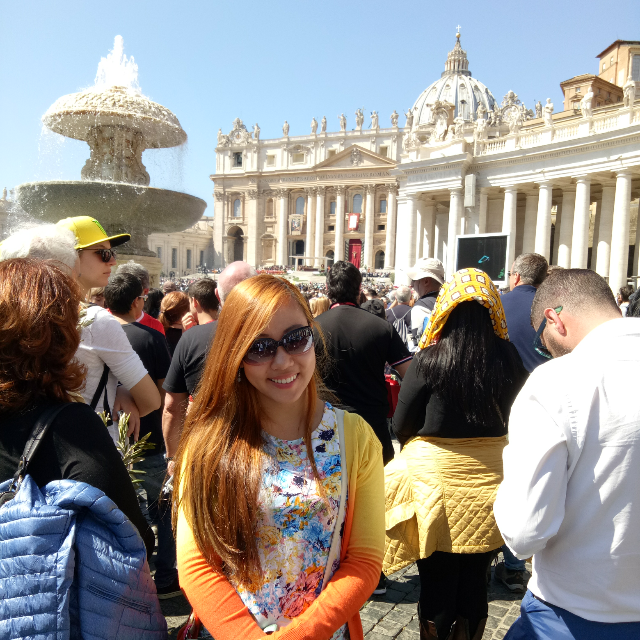
We went to see the Pope today! Every Sunday at noon, he stands from his window addressing the crowd.
It was so so crowded?!? But surprisingly there was still a lot of space in St Peter's square for everyone to move about!

Today the Pope delivered the message from downstairs, and took a ride around the square saying hi to the crowds and blessing a few babies!
Castel San Angelo
The Mausoleum of Hadrian, usually known as Castel Sant'Angelo, is a towering cylindrical building in Rome that used to be the property of Vatican City. It was initially commissioned by the Roman Emperor Hadrian as a mausoleum for himself and his family, built in 123 AD.
The name Castel Sant’Angelo dates from the 6th century when, according to legend, the Archangel Michael appeared on top of the Mausoleum with a flaming sword in hand. This miraculous apparition occurred during the papacy of Gregory the Great in 590. At that time a great plague was wreaking havoc in the city, and in order to invoke God’s mercy Pope Gregory organised a mass procession to the tomb of St. Peter.
During the procession the people of Rome saw a radiant vision of an angel sheathing a sword of fire, and thus ended the plague.
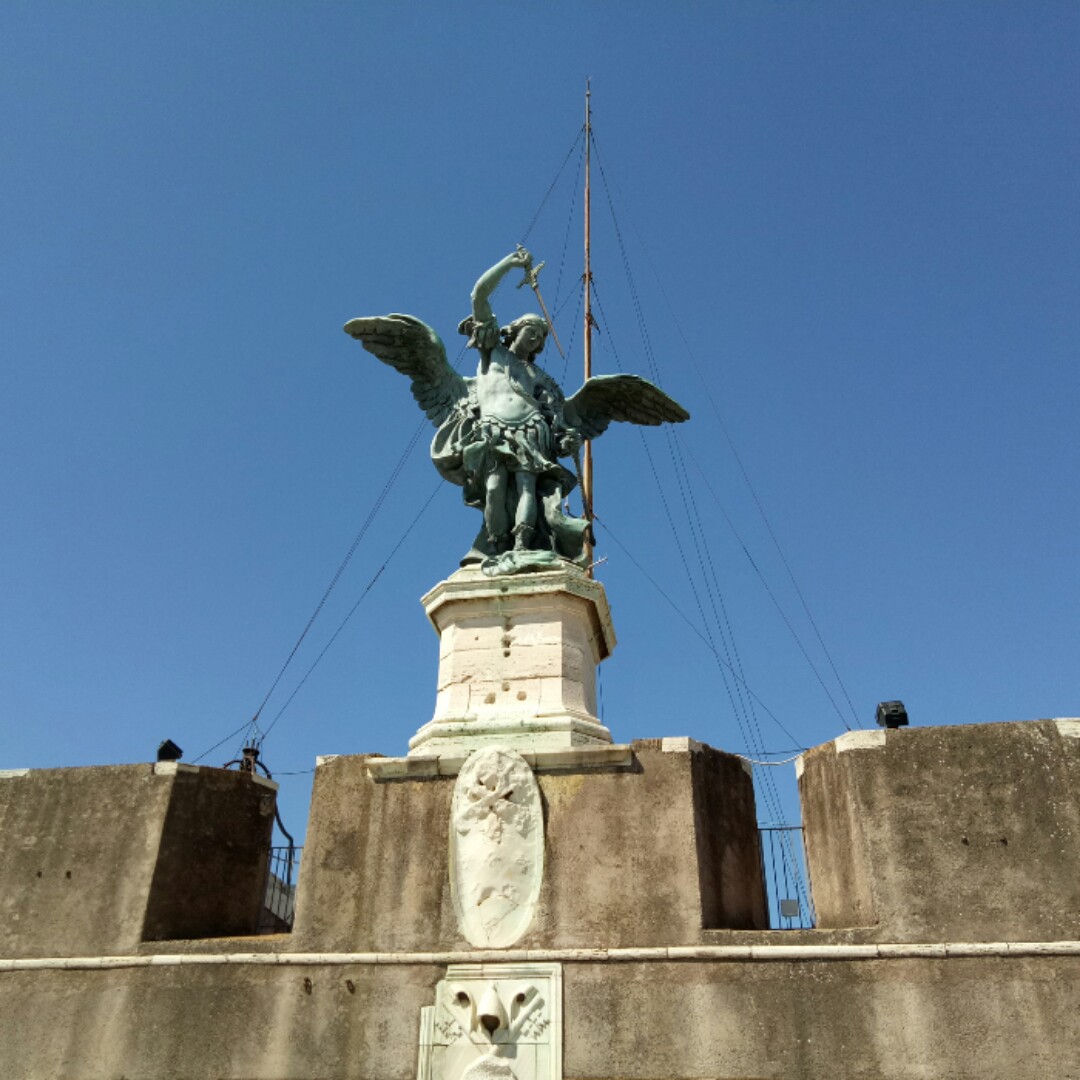
Here's a sculpture portraying that vision!
As with all fortresses, the castle had everything necessary within its walls in case of siege: huge water cisterns, granaries, even a mill. It also had an escape route created by the popes: the so-called “Passetto di Borgo”, a secret corridor that connected it to the Leonine walls and the Vatican, a convenient passageway that guaranteed the safety of the pope in dangerous situations, something that wasn’t unusual in turbulent medieval Rome.

Here's the secret passageway that connects the castle to the Vatican City.
Pope Alexander VI finished the wall in 1492—and just in the nick of time. He used it to flee the invading French two years later..
There were many other popes who used it, but the most recent and more famous was scurrying Clement VII who used it to escape the Landsknechts during the even more famous Sack of Rome in 1527, running across it, dodging a hailstorm of gunshot as no other pope had ever done before. That was in 1527, when Clement VII evaded the 20,000 mutinous troops of Charles V, whose troops went on to murder most of the Swiss Guard on the steps of St. Peter’s Basilica.
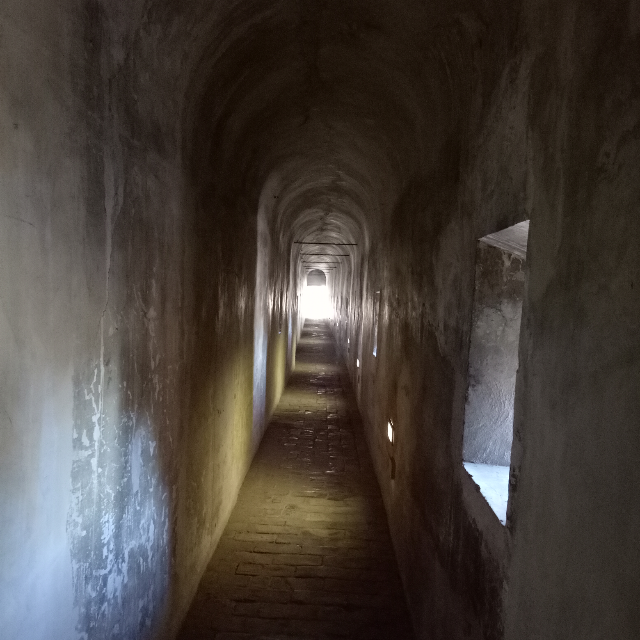
We got to walk the secret passageway! This is the hidden one used by the Pope.
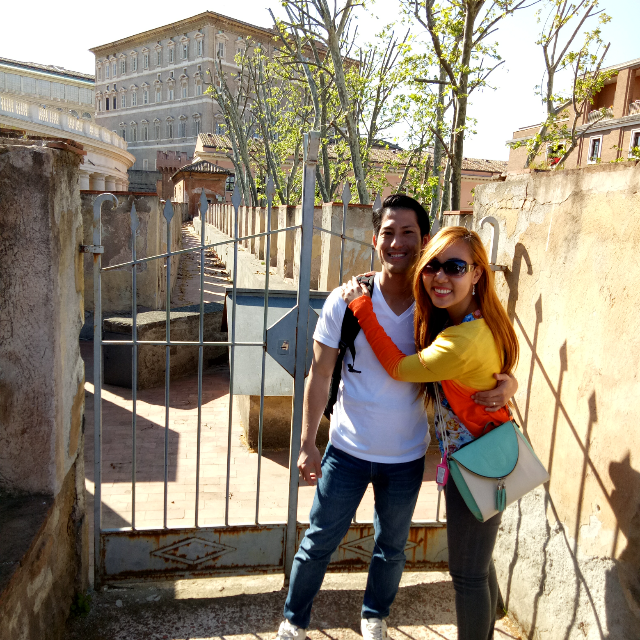
The route upstairs is for the guards to use, and here's the border of Italy and Vatican City. This is fairly new, having been erected after the state became separate from Rome.
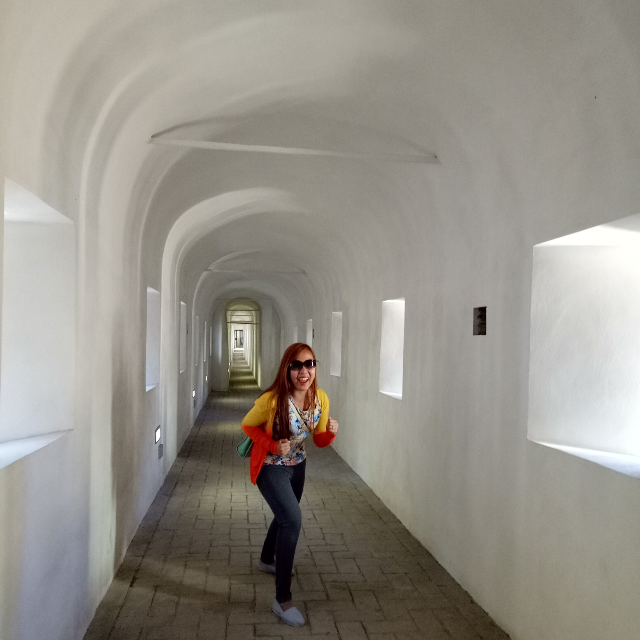
The inner passageway. This is where the Pope runs from the Vatican City to the castle. It leads to the backdoor of the Pope's bedroom, as our guide Julia told us. Painted white to represent the Pope maybe? Haha.
From the outside, you really can't tell this secret passageway exists unless you know what to look out for! Hubby thought the Pope ran outdoors, above this passageway, and was thinking, huh run in open air sure kena shoot leh?
Turned out that's used by the 💂. The Pope runs under!
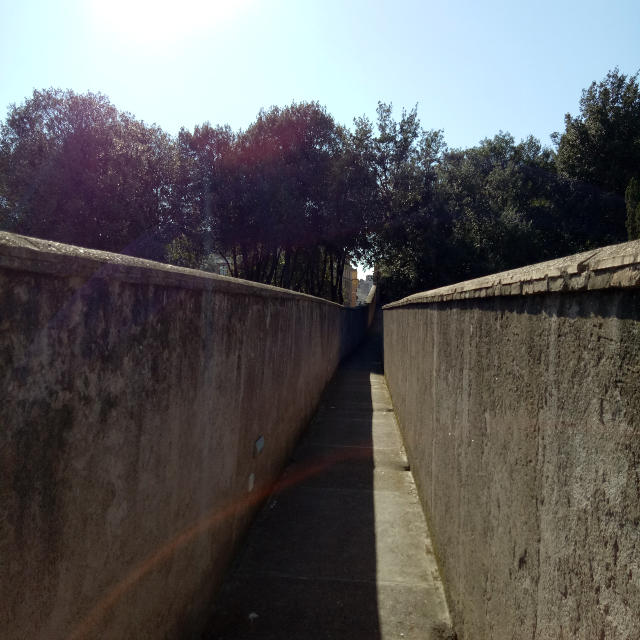
The upper passageway used by the guards. This is where many of them died, and where hubby thought the Pope runs too, until our guide corrected us.
There's an open air runway at the end of the path, as the last section to get into the castle / fortress, and it used to be a drawbridge at first, controlled by the guards who can then make sure the Pope gets to safety and shoot down his attackers either in the open or who followed him down the passageway, in case there were any betrayers.
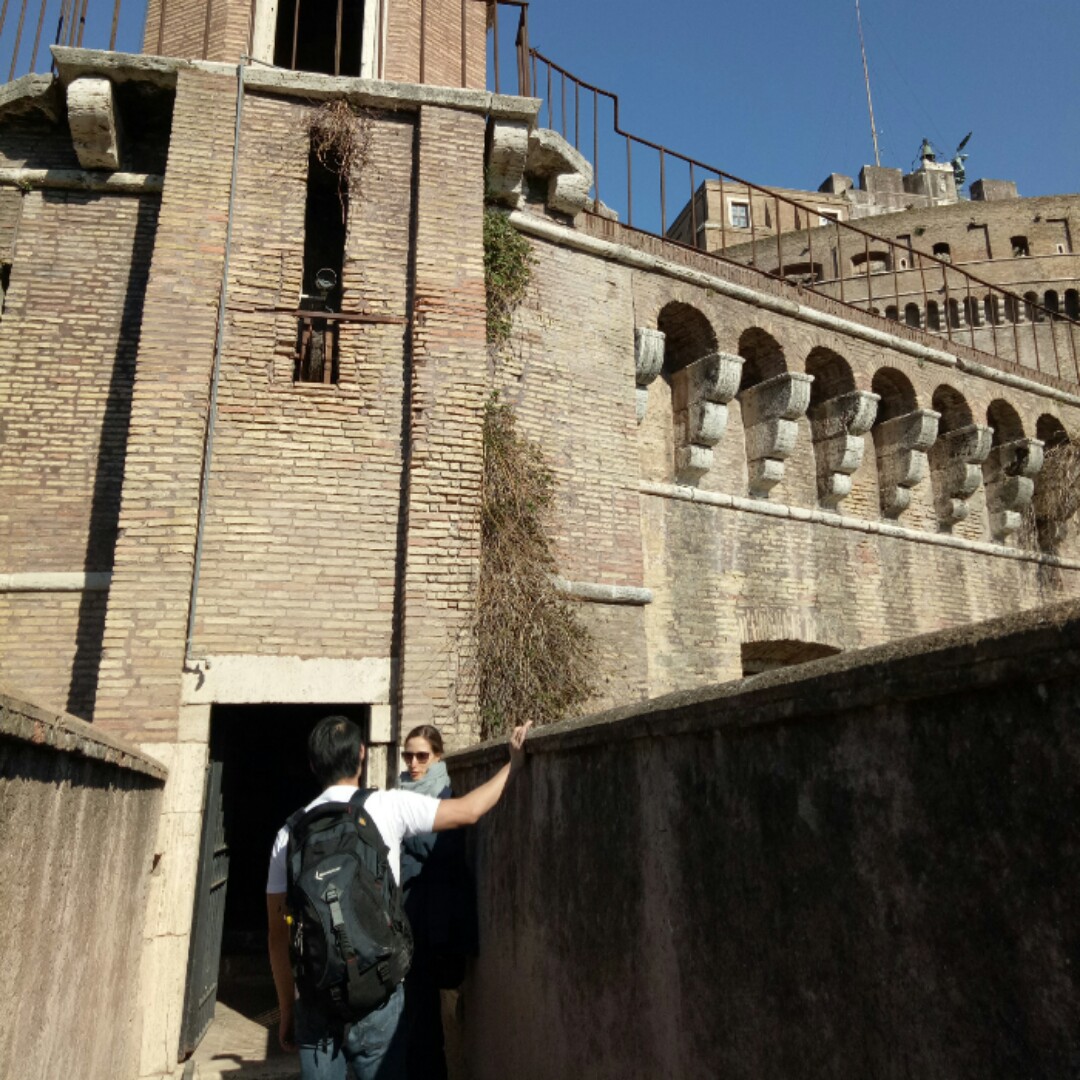
Can you see the drawbridge chains and pulley system above hubby's head? Those are the ones!
Remember that the castle used to be surrounded by a moat (where the current tourist ticketing lines are) so the drawbridge was the only connector back then on this passageway.
Today, it seems obvious to us that this is a passageway to safety, but our guide reminded us that in the past, there were no tall buildings unlike modern Rome, so it wasn't obvious back then!
Unfortunately the Popes today can no longer use this passageway cos the castle now belongs to Rome, not the Vatican. And it is no longer a fortress anyway.
All the steps in the castle along our main route were quite broad and short in height. Our guide explained cos it was for the horses!
I just got groped / attempted pickpocket?!?!?
WTF! It happened in Rome's Termini station (the main station for all the inter-city trains) and hubby was walking along on my right while I held our train tickets to Naples, checking for the coach and seat number.
This white guy, in his late 40s or 50s, walked past and tried to pickpocket my left butt pocket, then since there was nothing there, he groped my left butt!!!! 😡😡😡
If not for the fact that I was holding our 90 euros of tickets with my left hand, I would have slapped his hand! WTF
Hubby was angry and demanded to know which guy (I think he would have fought the guy lor, he's been saying he's itching for a physical fight 😑) but I told him to forget it since we were in a rush to get our train tickets sorted.
I feel so dirtied though?!? Now I can imagine how molested victims feel wtf.
😡😡😡😡😡 stupid white guy I hope you fall and crack your bones, or even better, get pickpocketed yourself!!!!!!!! #karma
F&B staff on our high speed train are on strike
"Dear passengers, we apologise that there will be no service on this journey as the staff from the service company are on strike today", came the train announcement after we were seated.
Lol. Our cousin was right when he warned us!

The rest of the passageway that leads into the Vatican.
In the Middle Ages, its function changed totally: the enormous mausoleum was transformed into a fortress and over the next 10 centuries modified many times with the addition of new outposts, drawbridges, a moat with waters from the Tibetan river, and opulent papal residences.
During the Renaissance, Michelangelo had a hand in making the papal apartments ever more opulent. Finally, Bernini rendered the whole scene still more spectacular: he reinvented the bridge that connected the castle to land, that which became Sant’Angelo Bridge, and made it an obligatory passageway for the pilgrims crossing the Tiber, protected by the reassuring gaze of ten beautiful angels that carried symbols of the passion of Christ.
The assassin in Angels and Demons uses the Passetto to transport the 4 Cardinals he abducts from the Vatican. Dan Brown's Professor Langdon and Vetra use the passageway the other direction – as a shortcut to the Vatican to reach the carmelango. The Passetto di Borgo has a long and storied history but is open only every few years. And we were lucky enough to catch it by signing up just 2 hours in advance!
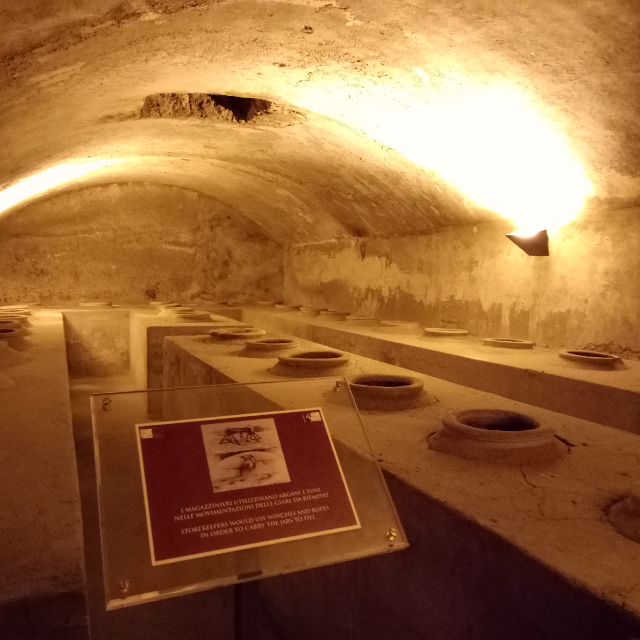
And here's where they keep all the hot oil! For fuel, lighting the castle, and also to pour on their enemies during battle.
At Stufetto di Clement VI, we also saw how a Pope’s private bath looked like in the 1500s. Not everyone’s toilet chamber is decorated with frescoes by Raphael! The frescos were also very interestingly thought out, with grand royal robes on opulent chairs that made it look as though the wearers had disappeared to Heaven halfway through taking their baths!
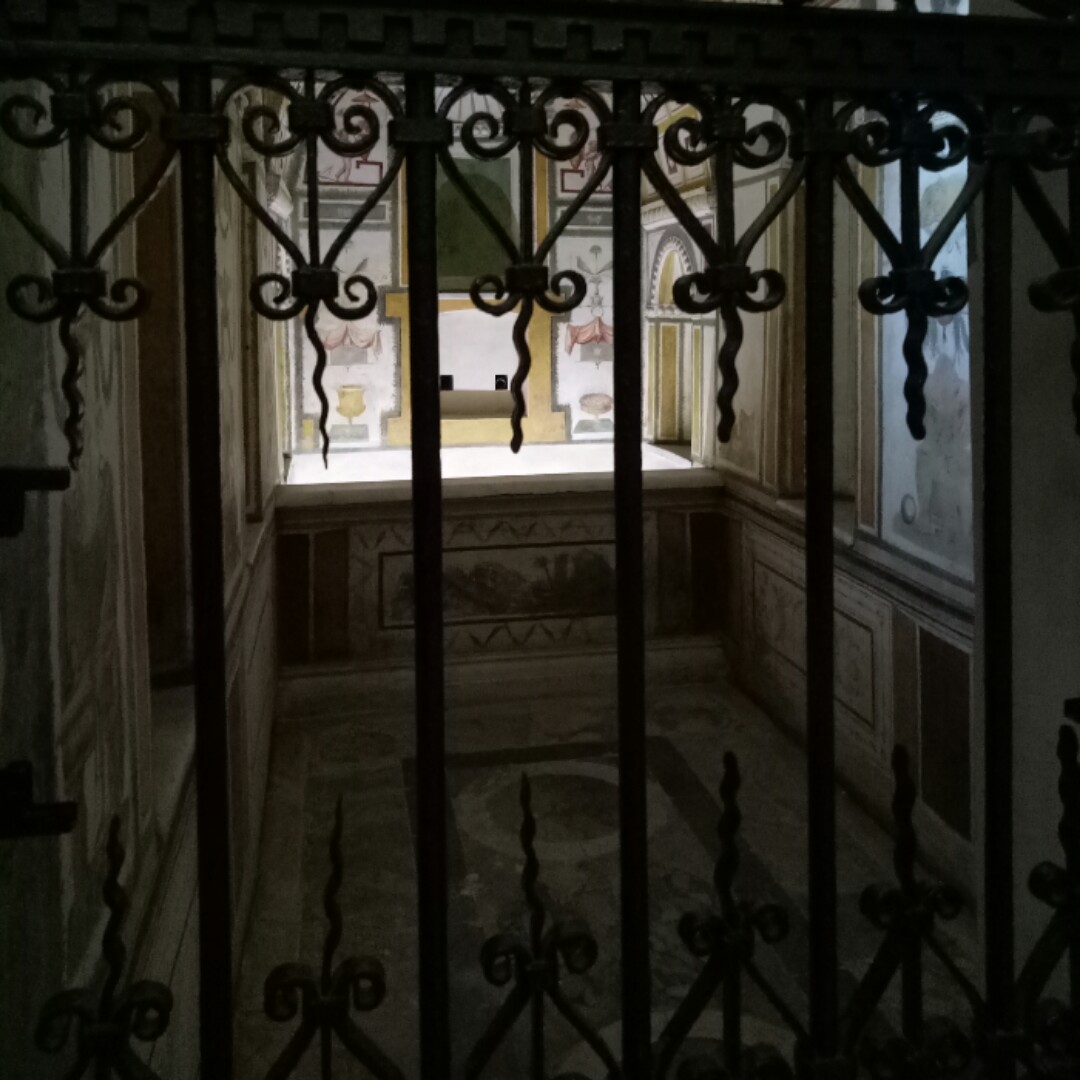
Here's the grand Pope baths. If you look closer you can see the frescos I just described.
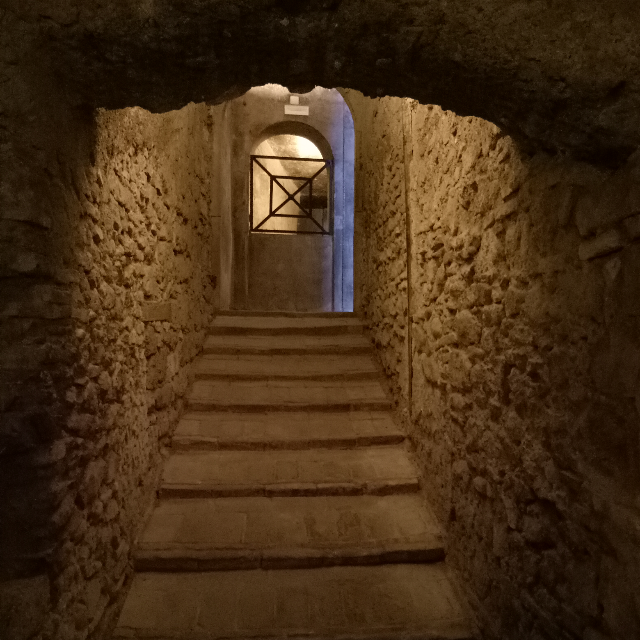
We got to go down these underground passageways that were otherwise closed to the public! They led to the prison cells, which I didn't take photos of because the light was too dark and no flash allowed.
The upper levels had these "luxury prisons" which was used to imprison the rich or important people. I didn't take a photo, but the room basically was very big, airy and with a superb view of the outside with large windows?!? Doesn't even feel like a prison k. It was such a direct contrast to the underground cramped ones we visited.
In the so called Cortile Dal Pozzo, built by Alexander VI, were the cells reserved for important persons. For example, here in 1538 – beginning of 1539 for the first time was held Benvenuto Cellini, where he could continue his activity as a sculptor and from where he escaped using the rope made of the pieces of bed sheet. But he was caught in a short time and re-imprisoned again till the end of 1539, but this time – in underground cell.
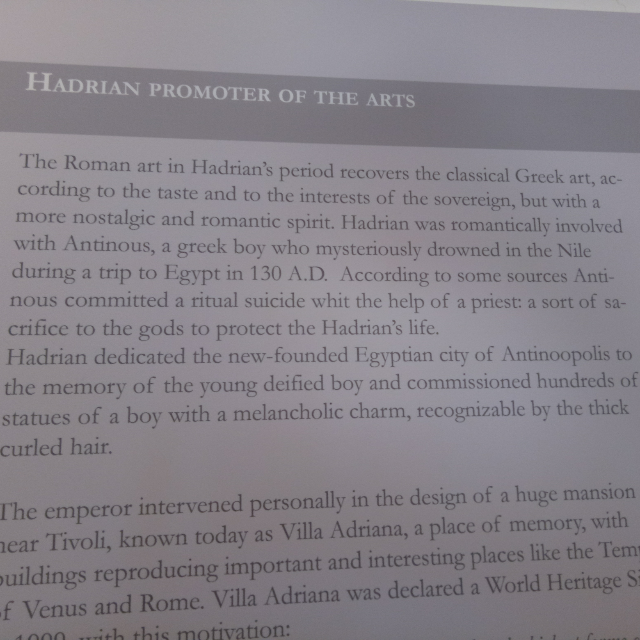
Hadrian was also Rome's first openly gay emperor. Wait till you guys see the sculpture of his lover, bet you'll recognize having seen it somewhere before…
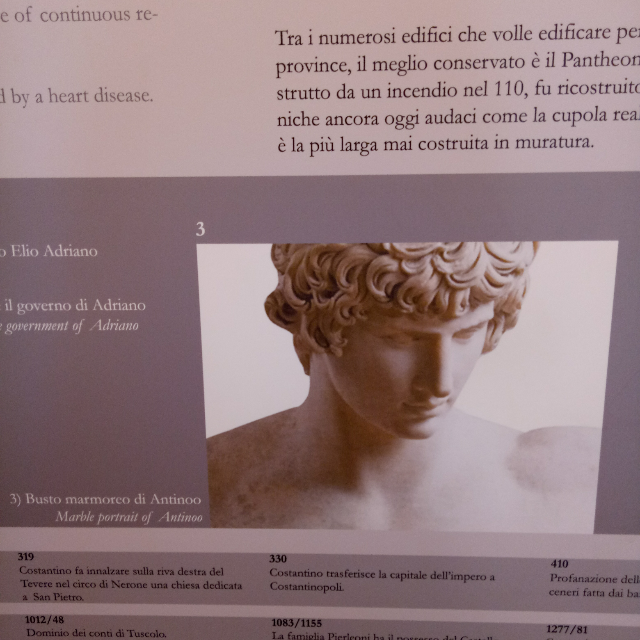
Doesn't this look familiar?!?




